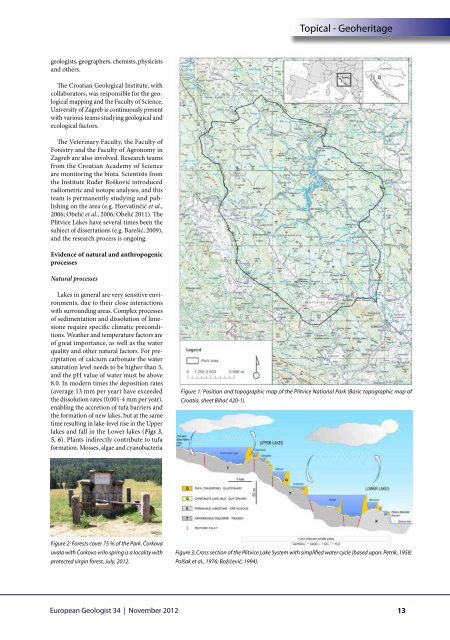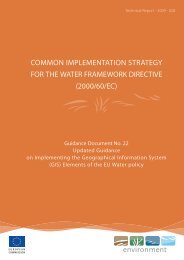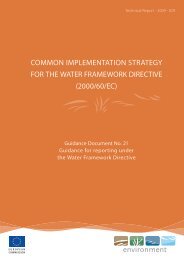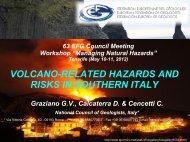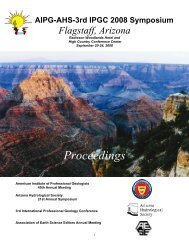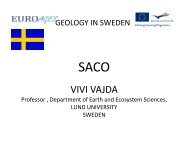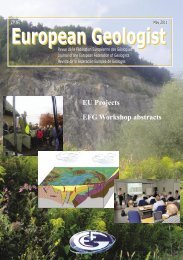European Geologist European Geologist Geoheritage - learning ...
European Geologist European Geologist Geoheritage - learning ...
European Geologist European Geologist Geoheritage - learning ...
You also want an ePaper? Increase the reach of your titles
YUMPU automatically turns print PDFs into web optimized ePapers that Google loves.
Topical - <strong>Geoheritage</strong><br />
geologists, geographers, chemists, physicists<br />
and others.<br />
The Croatian Geological Institute, with<br />
collaborators, was responsible for the geological<br />
mapping and the Faculty of Science,<br />
University of Zagreb is continuously present<br />
with various teams studying geological and<br />
ecological factors.<br />
The Veterinary Faculty, the Faculty of<br />
Forestry and the Faculty of Agronomy in<br />
Zagreb are also involved. Research teams<br />
from the Croatian Academy of Science<br />
are monitoring the biota. Scientists from<br />
the Institute Ruđer Bošković introduced<br />
radiometric and isotope analyses, and this<br />
team is permanently studying and publishing<br />
on the area (e.g. Horvatinčić et al.,<br />
2006; Obelić et al., 2006; Obelić 2011). The<br />
Plitvice Lakes have several times been the<br />
subject of dissertations (e.g. Barešić, 2009),<br />
and the research process is ongoing.<br />
Evidence of natural and anthropogenic<br />
processes<br />
Natural processes<br />
Lakes in general are very sensitive environments,<br />
due to their close interactions<br />
with surrounding areas. Complex processes<br />
of sedimentation and dissolution of limestone<br />
require specific climatic preconditions.<br />
Weather and temperature factors are<br />
of great importance, as well as the water<br />
quality and other natural factors. For precipitation<br />
of calcium carbonate the water<br />
saturation level needs to be higher than 3,<br />
and the pH value of water must be above<br />
8.0. In modern times the deposition rates<br />
(average 13 mm per year) have exceeded<br />
the dissolution rates (0.001-4 mm per year),<br />
enabling the accretion of tufa barriers and<br />
the formation of new lakes, but at the same<br />
time resulting in lake-level rise in the Upper<br />
lakes and fall in the Lower lakes (Figs 3,<br />
5, 6). Plants indirectly contribute to tufa<br />
formation. Mosses, algae and cyanobacteria<br />
Figure 1: Position and topographic map of the Plitvice National Park (Basic topographic map of<br />
Croatia, sheet Bihać 420-1).<br />
Figure 2: Forests cover 75 % of the Park. Čorkova<br />
uvala with Čorkovo vrilo spring is a locality with<br />
protected virgin forest, July, 2012.<br />
Figure 3: Cross section of the Plitvice Lake System with simplified water cycle (based upon: Petrik, 1958;<br />
Polšak et al., 1976; Božićević, 1994).<br />
<strong>European</strong> <strong>Geologist</strong> 34 | November 2012<br />
13


